7 Poisonous Spiders in Minnesota

While all spiders are venomous, most venoms are not a threat to people. In addition, spiders avoid people and will typically bite only when cornered. Despite general human avoidance, the spiders of most importance with regard to bite, venom, or concern about such include:
- Northern Widow
- Yellow Sac Spider
- Black & Yellow Garden Spider
- Wolf Spider
- Jumping Spider
- Nursery Web Spider
- Woodlouse Hunter
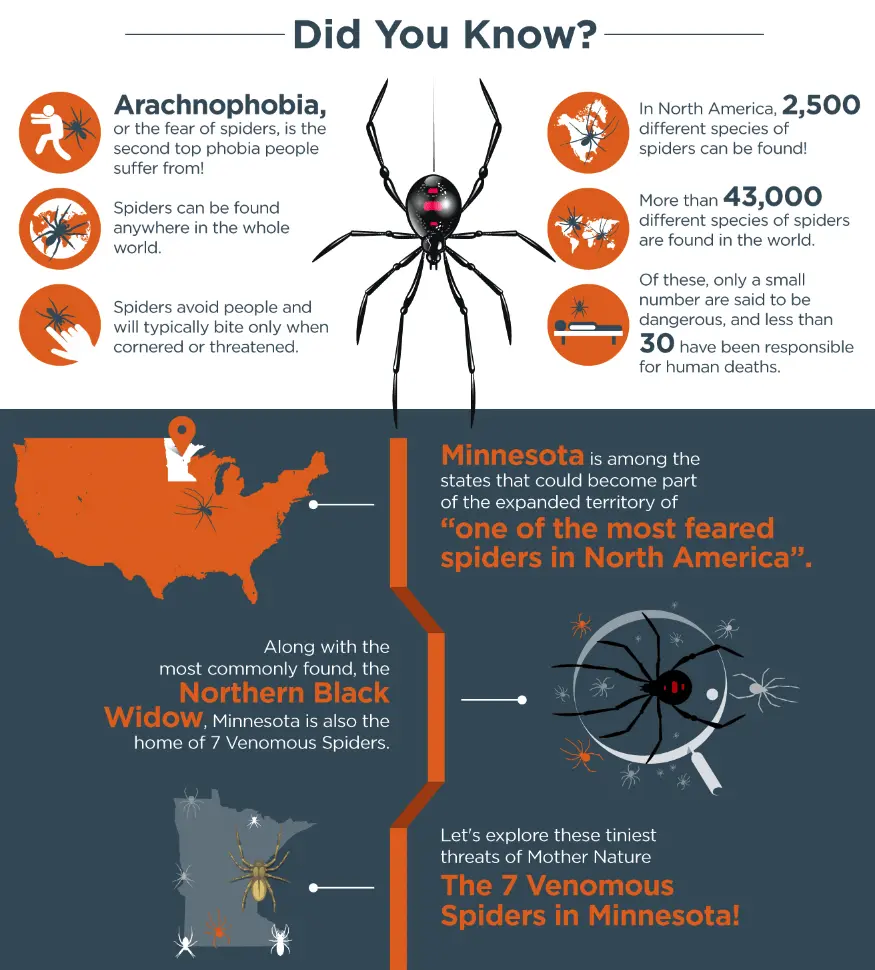
The Northern Widow
The northern widow is above all, the spider with the most potent venom in Minnesota.
The northern widow is part of the Hourglass Spiders (Theridiidae family) which includes other, more commonly found MN spiders including:
- Cobweb Spiders
- Triangulate Cobweb Spiders
- False Widow Spiders – Steatoda borealis,
Bite Appearance
Individual reactions vary and some may not notice any symptoms at all, but reactions may include:
- severe pain
- burning
- swelling
- redness
- two fang marks
- rash
Venom
The bite is similar to a pinprick, but the venom is a potent neurotoxin that may cause
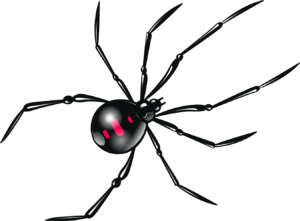
- fever
- severe muscle cramping
- nausea which typically persists for 1 to 2 days.
- vomiting
- difficulty breathing
- excessive sweating
- swollen eyelids
- weakness
- tremors
Despite the daunting list of symptoms, death rarely results from their bite and is typically associated with other conditions.
It is important to keep in mind that the other cobweb spiders mentioned above do not have a venom that is considered dangerous to humans.
Where are they?
The northern widow is not commonly found in Minnesota, but it turns up from time to time.
Signs inside home
Their webs are irregular in formation and small to medium in size. They are most likely to occupy small enclosures especially in and around
- outbuildings
- sheds
- pump enclosures
- meter enclosures
- rodent bait stations
- building perimeters along the foundation
The Yellow Sac Spider
The Yellow sac spider (cheiracanthium mildei) is a much more common spider throughout Minnesota. It belongs to the Eutichuridae family along with the long legged sac spider which is also found in Minnesota,
Bite appearance
Reactions to bites varies from person to person and may include:

- short-term swelling
- redness
- soreness
- small necrotic wound
Venom spread speed
Though mild reactions may occur, the venom is not considered dangerous to humans. Regardless of the venom, the primary concern stems from a possibility of a secondary bacterial infection from the bite.
Where is it?
Yellow sac spiders are found throughout Minnesota and may be found indoors year round. They may be seen resting on walls or ceilings, but typically hide in silken retreats found:
- under stones
- beneath bark
- below leaves
- in corners of buildings
- dark recesses indoors
- folds in fabric

Signs they are inside the home
It is not uncommon to see the spider itself as the first sign, but their tell-tale sign is their sleep sac. In other words, a small tube or sac that they spin around dawn for sleeping. Despite thick spun sacs, they don’t spin other webs. You may find these sacs in rolled up leaves or underneath logs, but they are just as likely to be in a corner.
The Black and Yellow Garden Spider
The Black and Yellow Garden Spideris part of a large family (Araneidae) of spiders common outside of Minnesota homes including:
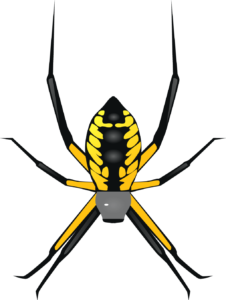
- Marbled Orb Weavers
- Shamrock Orb Weavers
- Hentz Orb Weavers
- Cat Faced Spiders
- Banded Garden Spider
Bite appearance & Venom Potency
Their bite is similar to a bee sting, but is not considered dangerous.
Where are they found in MN?
These outdoor spiders that are most likely to build their homes in:
- Gardens
- Shrubs
- Tree branches
- Weeds
- Spaces between manmade structures
They are likely to be found head down in the center of a large orb shaped web.
The Wolf Spider
Unlike the master web building garden spiders, the Wolf spider (arctosa rubicunda, geolycosa missouriensis) of the Lycosidae family is plentiful in Minnesota and is an avid hunter. Despite this spider’s aggression toward its prey, it wants nothing to do with human beings wandering around – even the tiny toddling ones.
Bite & Venom
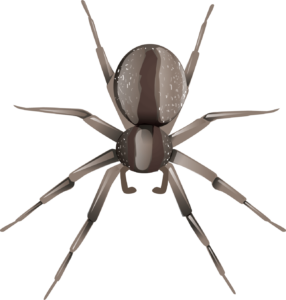
Though their bite may be as painful as a pinprick up to a bee sting, the venom may cause numbness, but is not usually dangerous to humans. However, secondary bacterial infections from bites are a possibility.
Where are they found?
Wolf spiders thrive in all corners of the state of Minnesota beneath stones and debris, but as temperatures drop, they tend to move indoors.
Signs of their presence in a home
Since wolf spiders are active hunters, the first sign they are in your home is typically the sighting of the spider itself.
The Jumping Spider
Jumping Spiders (Salticidae family) are a colorful spider variety in Minnesota. In addition to color, the movement of the:
- Bold Jumper
- Zebra jumper
is likely to catch your eye.
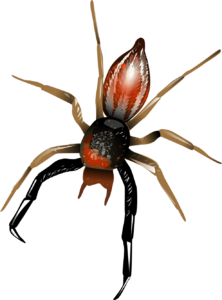
Bite & Venom
The bite is similar to a bee sting, but the venom is not usually dangerous to humans.
Where are they found?
Jumping spiders are typically lurching around exterior walls, window screens, tree trunks, logs, rocks, etc.
Signs they are inside the home
They often will hitchhike into homes on clothing and pets, so you may not have a warning that they are present until they pop out in short, quick bursts. They hop more then run or crawl – hence their name.
Nursery Web Spider
Nursery Web Spiders of the Pisauriadea family found in Minnesota include:
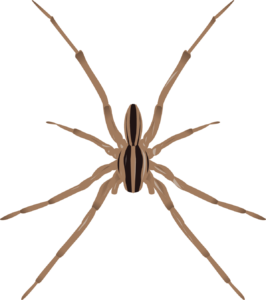
- Forest Nursery Web Spiders
- Striped Fishing Spider
- Dark fishing spider
They are quite large with an impressive leg span that can give even the calmest of nerves a jolt when they appear.
Bite & Venom
These giants of the spider world carry a bite similar to a bee sting, however the venom is not usually dangerous to humans.
Where they are found
With Minnesota’s plentiful lakes, these spiders live throughout the state in:
- Sunlit vegetation
- Nooks of tree trunks
- Building exteriors
- Cattails
- Aquatic plants
As the list suggests, these spiders are not likely to be permanent indoor dwellers.
The Woodlouse Hunter Spider
The Woodlouse Hunter of the Dysderidae family has a fierce appearance including some threatening fangs.
Bite & Venom
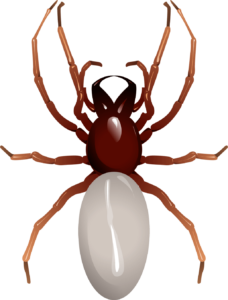
Their distinct fangs may deliver a painful bite, but the venom is not dangerous to people. However, secondary bacterial infections from their bites are possible.
Where are they found?
These dusk hunting spiders roam throughout rural and residential areas in:
- basements
- crawlspaces
- under rocks
- near foundations
Signs they are in the home
Since it is a tube spider, look for a tubular retreat or sticky stands radiating from a tubular retreat or other hiding place.
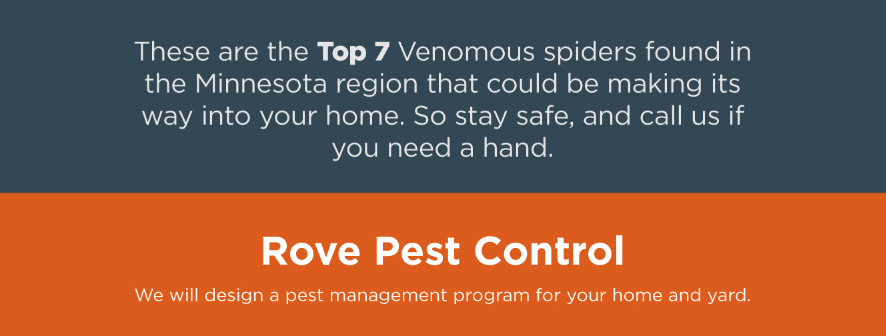
Arizona Poisonous Spider Control Service Areas
Massachusetts Poisonous Spider Control Service Areas
- Poisonous Spider Control in Framingham, MA
- Poisonous Spider Control in Marlborough, MA
- Poisonous Spider Control Milford, MA
- Poisonous Spider Control in Shrewsbury, MA
- Poisonous Spider Control in Southborough, MA
- Poisonous Spider Control in Wellesley, MA
Michigan Poisonous Spider Control Service Areas
- Poisonous Spider Control in Commerce Charter Township, MI
- Poisonous Spider Control in Detroit, MI
- Poisonous Spider Control in Farmington Hills, MI
- Poisonous Spider Control in Milford, MI
- Poisonous Spider Control in Novi, MI
- Poisonous Spider Control in Plymouth, MI
- Poisonous Spider Control in South Lyon, MI
- Poisonous Spider Control in Wixom, MI
Minnesota Poisonous Spider Control Service Areas
- Poisonous Spider Control in Lakeville, MN
- Poisonous Spider Control in Brooklyn Park, MN
- Poisonous Spider Control in Champlin, MN
- Poisonous Spider Control in Eagan, MN
- Poisonous Spider Control in Edina, MN
- Poisonous Spider Control in Golden Valley, MN
- Poisonous Spider Control in Inver Grove Heights, MN
- Poisonous Spider Control in Minneapolis-St.Paul, MN
- Poisonous Spider Control in Oakdale, MN
- Poisonous Spider Control in Plymouth, MN
- Poisonous Spider Control in Rochester, MN
- Poisonous Spider Control in Roseville, MN
- Poisonous Spider Control in Shoreview, MN
